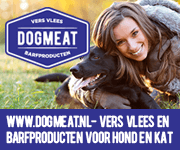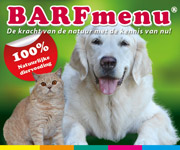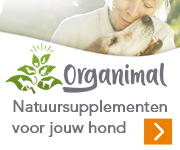Het is alleen wel in het engels.
Echt Schandalig
There is some info I have on Rawhide and other dog treats. It is as I
received it (for informational purposes), it has not been edited:
Besides causing blockages, rawhide chews contain an enormous amount of
chemicals, bleaches and dyes. I would not personally feed these products.
Another thing to note is the whiteness of the rawhide. In foreign countries
they use lye to bleach the hides to give them a nice white appearance as well
as arsenic to preserve them.
WHAT IS RAWHIDE?
Rawhide is literally the outside of a cow - the skin. It provides dogs
with a satisfying chewing experience plus it's cheap and easy to find. So how
can it be dangerous? Here's the Problem...
Hidden Dangers
Dr. John Wedeking, an Iowa veterinarian, remembers hearing about rawhide in
the news.
"Reports of arsenic contamination popped up in papers once," he says, but
adds that it came from another country.
Since rawhide is not regulated in any way, it could happen again. These
foreign hides may also contain other detrimental things such as antibiotics,
lead, or insecticides that could adversely affect your dog's health.
Wedeking adds that dogs can easily choke on it when the original large
rawhide object is chewed down to a smaller piece.
'Choking is a hazard, and rawhide can cause gastric irritation when dogs
chew on it often," he says. Wedeking adds that gastric irritation can also
cause vomiting and extreme discomfort in dogs.
Rawhides, Cow Hooves and Pigs' Ears
"These well-liked dog treats are purchased in large numbers, especially
around holidays, by well-meaning dog owners hoping to give their pets something
special. These toys are favorites for many dogs and are popular with owners
because they keep their pets occupied and supposedly out of trouble during
holiday activities. There are definite risks associated with these treats,
however. All three types are supposedly made of digestible animal products.
However, they are digested quite slowly and, if consumed rapidly, can cause
either vomiting or diarrhea from the many pieces still sitting undigested in the
GI tract. If the treats are swallowed whole or in large chunks, there are
additional dangers. Rawhide chews can lodge in the throat and cause choking,
or a large piece may be swallowed, scraping and irritating the throat and
esophagus on the way down. Once in the stomach or intestinal tract, a large
piece of rawhide can also create a physical obstruction. An additional danger
that is less widely known is the practice, in some countries, of using an
arsenic-based preservative in the processing of rawhide toys.
"Cow hooves are even more dangerous than rawhides. They are hard enough
that a dog can actually break a tooth on one. They can also be chewed up into
sharp fragments which may cause a partial intestinal obstruction. Partial
obstructions are often difficult to diagnose until the point at which the
fragment is ready to perforate the wall of the bowel from pressure against the
sharp edges. If perforation has occurred, the infection that ensues from leakage of intestinal contents can be fatal.
"Pigs' ears can cause GI upset if overeaten, similar to the situation with
rawhides, although obstructions are less common because the ears are not
usually shaped into solid chunks. There is, however, a less widely known anger
associated with pig ears: A recent FDA advisory published by the U.S. Dept. of
Health and Human services on Oct.1, 1999, stated that there is "a nationwide
public health warning alerting consumers about a number of recent cases in
Canada of "human" illnesses apparently related to contact with dog chew
products made from pork or beef-derived materials (e.g., pigs ears, beef jerky
treats, smoked hooves, pigs skins, etc.)... FDA is urging pet owners... to
handle them carefully. Anyone who comes in contact with these treats should wash their hands with hot water and soap. Initial reports of illnesses came from
Canada and involved Canadian products, but subsequent examination of similar
products produced in the U.S. indicate that all pet chew products of this type
may pose a risk...."
Where is the Rawhide Chew Made?
Tests on imported pet products made from animal hides by UK health
authorities revealed many carried the salmonella bug, a common cause of
gastrointestinal infections in humans.
They found that one in three batches imported from Thailand and one in eight
from China contained salmonellas that had survived processing and
manufacturing.
Doctors warned that small children might be at most risk of infection, since
they were especially likely to come into close contact with dogs and their
chews.
Dog and Cat Used in Some Rawhide Chews
"More than 2 million dogs and cats are killed for their fur each year. The
Humane Society of the United States recently finished an 18-month
investigation of the fur trade. Investigators went to China, Thailand, and the
Philippines. They found dogs and cats being treated inhumanely and then killed for their fur and skin. More than 2 million cats and dogs are killed for their
fur each year. Some of this fur and skin is imported to the United States.
"It is not against the law to wear, sell, and import cat and dog fur in the
United States. It is, however, illegal to kill cats and dogs for their fur.
This is different in China and many other places. There cats and dogs can
be raised and killed for their fur and skin. Some of these animals come from
breeding farms, but others are strays and stolen pets.
"The Humane Society found animals kept in crowded and dirty conditions.
They are transported in bags. They are not fed regularly. Dogs are often cut
in the hind leg or groin when they are killed. They then bleed to death.
The dogs are sometimes skinned while they are still alive. Cats are often
strangled to death. These methods leave the animals' fur in good condition for
use as coats and trim, but are cruel.
"Cat and dog skin is difficult to recognize. It looks the same as other
leather. It often comes from Thailand and the Philippines. Items which often
use cat and dog skin include rawhide chew toys, musical instruments, clothing,
purses, bed sheets, car upholstery, gloves, sports equipment, and medicine."
What You Can Do
Substitute fresh marrow bones from the grocery store. Always supervise
your dog and NEVER leave unattended while chewing a bone.








